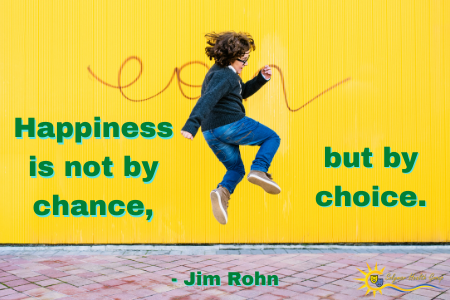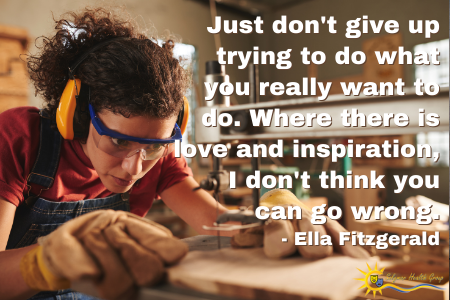Dialectical Behavior Therapy (DBT) is an evidence-based psychotherapy that began with efforts to treat borderline personality disorder (also known as Emotional Instability Disorder). There is evidence that DBT can be useful in treating mood disorders, suicidal ideation, and for change in behavioral patterns such as self-harm, and substance abuse. DBT evolved into a process in which the therapist and client work with acceptance and change-oriented strategies, and ultimately balance and synthesize them, in a manner comparable to the philosophical dialectical process of hypothesis and antithesis, followed by synthesis.
This approach was developed by Marsha M. Linehan, a psychology researcher at the University of Washington, to help people increase their emotional and cognitive regulation by learning about the triggers that lead to reactive states and helping to assess which coping skills to apply in the sequence of events, thoughts, feelings, and behaviors to help avoid undesired reactions.
Linehan developed DBT as a modified form of cognitive behavioral therapy (CBT) in the late 1980s to treat people with borderline personality disorder (BPD) and chronically suicidal individuals. Research on its effectiveness in treating other conditions has been fruitful; DBT has been used by practitioners to treat people with depression, drug and alcohol problems, post-traumatic stress disorder (PTSD), traumatic brain injuries (TBI), binge-eating disorder, and mood disorders. Research indicates DBT might help patients with symptoms and behaviors associated with spectrum mood disorders, including self-injury. Recent work also suggests its effectiveness with sexual-abuse survivors and chemical dependency.
DBT combines standard cognitive-behavioral techniques for emotion regulation and reality-testing with concepts of distress tolerance, acceptance, and mindful awareness largely derived from contemplative meditative practice. DBT is based upon the biosocial theory of mental illness and is the first therapy that has been experimentally demonstrated to be generally effective in treating BPD. The first randomized clinical trial of DBT showed reduced rates of suicidal gestures, psychiatric hospitalizations, and treatment drop-outs when compared to treatment as usual. A meta-analysis found that DBT reached moderate effects in individuals with borderline personality disorder.
Four modules
1 - Mindfulness
Mindfulness is one of the core ideas behind all elements of DBT. It is considered a foundation for the other skills taught in DBT, because it helps individuals accept and tolerate the powerful emotions they may feel when challenging their habits or exposing themselves to upsetting situations.
The concept of mindfulness and the meditative exercises used to teach it are derived from traditional contemplative religious practice, though the version taught in DBT does not involve any religious or metaphysical concepts. Within DBT it is the capacity to pay attention, nonjudgmentally, to the present moment; about living in the moment, experiencing one's emotions and senses fully, yet with perspective. The practice of mindfulness can also be intended to make people more aware of their environments through their 5 senses: touch, smell, sight, taste, and sound. Mindfulness relies heavily on the principle of acceptance, sometimes referred to as "radical acceptance". Acceptance skills rely on the patient's ability to view situations with no judgment, and to accept situations and their accompanying emotions. This causes less distress overall, which can result in reduced discomfort and symptomology.
Acceptance and change
The first few sessions of DBT introduce the dialectic of acceptance and change. The patient must first become comfortable with the idea of therapy; once the patient and therapist have established a trusting relationship, DBT techniques can flourish. An essential part of learning acceptance is to first grasp the idea of radical acceptance: radical acceptance embraces the idea that one should face situations, both positive and negative, without judgment. Acceptance also incorporates mindfulness and emotional regulation skills, which depend on the idea of radical acceptance. These skills, specifically, are what set DBT apart from other therapies.
Often, after a patient becomes familiar with the idea of acceptance, they will accompany it with change. DBT has five specific states of change which the therapist will review with the patient: precontemplation, contemplation, preparation, action, and maintenance. Precontemplation is the first stage, in which the patient is completely unaware of their problem. In the second stage, contemplation, the patient realizes the reality of their illness: this is not an action, but a realization. It is not until the third stage, preparation, that the patient is likely to take action, and prepares to move forward. This could be as simple as researching or contacting therapists. Finally, in stage 4, the patient takes action and receives treatment. In the final stage, maintenance, the patient must strengthen their change in order to prevent relapse. After grasping acceptance and change, a patient can fully advance to mindfulness techniques.
"What" skills
"What" skills are what one does when practicing mindfulness: observe, describe, or participate. These activities should be done only one at a time. To observe is to pay attention on purpose to the present moment. To describe is to put into words what one has observed. To participate is to enter fully into the activity of the present moment.
- Observe
- This is used to nonjudgmentally observe one's environment within or outside oneself. It is helpful in understanding what is going on in any given situation.
- DBT recommends developing a "teflon mind", the ability to let feelings and experiences pass without sticking in the mind.
- Describe
- This is used to express what one has observed with the observe skill. It is to be used without judgmental statements. This helps with letting others know what one has observed. Once the environment or inner state of mind has been observed with 5 senses, the individual can put words to observations and thus better understand the environment.
- Participate
- This is used to become fully focused on, and involved in, the activity that one is doing.
"How" skills
"How" skills are how one observes, describes, and participates when practicing mindfulness: taking a nonjudgmental stance ("nonjudgmentally"), focusing on one thing in the moment ("one-mindfully"), and doing what works ("effectively"). Unlike the "what" skills, which should be done one at a time, the "how" skills may be done at the same time.
- Nonjudgmentally
- This is the action of describing the facts, and not thinking in terms of "good" or "bad," "fair" or "unfair." These are judgments, not factual descriptions. Being nonjudgmental helps one make points effectively without adding a judgment with which someone else might disagree.
- One-mindfully
- This is used to focus on one thing. One-mindfully is helpful in keeping one's mind from straying into "emotion" by a lack of focus.
- Effectively
- This is simply doing what works. It is a very broad-ranged skill and can be applied to any other skill to aid in it being successful.
2 - Distress tolerance
Many current approaches to mental health treatment focus on changing distressing events and circumstances such as dealing with the death of a loved one, loss of a job, serious illness, terrorist attacks and other traumatic events. They have paid little attention to accepting, finding meaning for, and tolerating distress. This task has generally been tackled by person-centered, psychodynamic, psychoanalytic, gestalt, or narrative therapies, along with religious and spiritual communities and leaders. Dialectical behavior therapy emphasizes learning to bear pain skillfully.
Distress tolerance skills constitute a natural development from DBT mindfulness skills. They have to do with the ability to accept, in a non-evaluative and nonjudgmental fashion, both oneself and the current situation. Since this is a non-judgmental stance, this means that it is not one of approval or resignation. The goal is to become capable of calmly recognizing negative situations and their impact, rather than becoming overwhelmed or hiding from them. This allows individuals to make wise decisions about whether and how to take action, rather than falling into the intense, desperate, and often destructive emotional reactions that are part of borderline personality disorder.
- TIP Skill
- This is one of the fastest and most popular of the distress tolerance skills. It alleviates distress very quickly. Clients are encouraged to use this skill when they are very emotionally overwhelmed and strong urges to self-harm are present.
- Tipping the temperature of one's face with very cold water. The idea is to bring on the diving reflex and bring the physiology down to slow it down.
- Intense exercise of approximately 20 minutes.
- Paced breathing as well as paired muscle relaxation.
- Distract with ACCEPTS
- This is a skill used to distract oneself temporarily from unpleasant emotions.
- Activities - Use positive activities that one enjoys.
- Contribute - Help others or the community.
- Comparisons - Compare oneself either to people that are less fortunate or to how one used to be when in a worse state.
- Emotions (other) - cause oneself to feel something different by provoking one's sense of humor or happiness with corresponding activities.
- Push away - Put one's own situation on the back-burner for a while. Put something else temporarily first in one's mind.
- Thoughts (other) - Force one's mind to think about something else.
- Sensations (other) - Do something that has an intense feeling other than what one is feeling, like a cold shower or a spicy candy.
- Self-soothe
- This is a skill in which one behaves in a comforting, nurturing, kind, and gentle way to oneself. One uses it by doing something that is soothing. It is used in moments of distress or agitation. New York Jets wide receiver Brandon Marshall, who was diagnosed with BPD in 2011 and is a strong advocate for DBT, cited activities such as prayer and listening to jazz music as instrumental in his treatment.
- IMPROVE the moment
- This skill is used in moments of distress to help one relax.
- Imagery - Imagine relaxing scenes, things going well, or other things that are pleasing.
- Meaning - Find some purpose or meaning in what one is feeling.
- Prayer - Either pray to whomever one worships, or, if not religious, chant a personal mantra.
- Relaxation - Relax muscles and breathe deeply; use with self-soothing.
- One thing in the moment - Focus one's attention on what one is doing. Keep oneself in the present.
- Vacation (brief) - Take a break from it all for a short period of time.
- Encouragement - Cheerleading oneself, telling oneself that it is possible to make it through a situation and cope as it will assist resilience and reduce vulnerability.[28]
- Pros and cons
- Think about the positive and negative things about not tolerating distress.
- Radical acceptance
- Let go of fighting reality. Accept the situation for what it is.
- Turning the mind
- Turn one's mind toward an acceptance stance. It should be used with radical acceptance.
- Willingness vs. willfulness
- Be willing and open to do what is effective. Let go of a willful stance which goes against acceptance. Keep one's eye on the next goal.
3 - Emotion regulation
Individuals with borderline personality disorder and suicidal individuals are frequently emotionally intense and labile. They can be angry, intensely frustrated, depressed, or anxious. This suggests that these clients might benefit from help in learning to regulate their emotions. Dialectical behavior therapy skills for emotion regulation include:
- Identify and label emotions
- Identify obstacles to changing emotions
- Reduce vulnerability to emotion mind
- Increase positive emotional events
- Increase mindfulness to current emotions
- Take opposite action
- Apply distress tolerance techniques
Emotional regulation skills are based on the theory that intense emotions are a conditioned response to troublesome experiences, the conditioned stimulus, and therefore, are required to alter the patient's conditioned response. These skills can be categorized into four modules: understanding and naming emotions, changing unwanted emotions, reducing vulnerability, and managing extreme conditions:
- Learning how to understand and name emotions: the patient focuses on recognizing their feelings. This segment relates directly to mindfulness, which also exposes a patient to their emotions.
- Changing unwanted emotions: the therapist emphasizes the use of opposite-reactions, fact-checking, and problem solving to regulate emotions. While using opposite-reactions, the patient targets distressing feelings by responding with the opposite emotion.
- Reducing vulnerability: the patient learns to accumulate positive emotions and to plan coping mechanisms in advance, in order to better handle difficult experiences in the future.
- Managing extreme conditions: the patient focuses on incorporating their use of mindfulness skills to their current emotions, in order to remain stable and alert in a crisis situation.
- Story of emotion
- This skill is used to understand what kind of emotion one is feeling.
- Prompting event
- Interpretation of the event
- Body sensations
- Body language
- Action urge
- Action
- Emotion name, based on previous items on list
- PLEASE
- This skill concerns ineffective health habits that can make one more vulnerable to emotion mind. This skill is used to maintain a healthy body, so one is more likely to have healthy emotions.
- PhysicaL illness (treat) - If one is sick or injured, get proper treatment for it.
- Eating (balanced) - Make sure of eating enough and feeling satisfied.
- Avoid mood-altering drugs - Do not take other non-prescribed medication or drugs. They may be very harmful to the body, and can make moods unpredictable.
- Sleep (balanced) - Do not sleep too much or too little. Eight hours of sleep is recommended per night for the average adult.
- Exercise - Make sure to get an effective amount of exercise, as this will both improve body image and release endorphins, making one happier.
- Build mastery
- Try to do one thing a day to help build competence and control.
- Opposite action
- This skill is used when one has an unjustified emotion, one that does not belong in the situation at hand. It is used by doing the opposite of one's urges in the moment. It is a tool to bring one out of an unwanted or unjustified emotion by replacing it with the emotion that is opposite. This can be done by completing an action which is the opposite of what you feel urged to do, for example, if you're feeling like you want to isolate yourself, instead, actively go and reach out to someone or if you feel the urge to avoid something, go and do it.
- Problem solving
- This is used to solve a problem when emotion is justified. It is used in combination with other skills.
- Letting go of emotional suffering
- Observe and experience one's own emotion, accept it, then let it go.
4 - Interpersonal effectiveness
Interpersonal response patterns taught in DBT skills training are very similar to those taught in many assertiveness and interpersonal problem-solving classes. They include effective strategies for asking for what one needs, saying no, and coping with interpersonal conflict.
Individuals with borderline personality disorder frequently possess good interpersonal skills in a general sense. The problems arise in the application of these skills to specific situations. An individual may be able to describe effective behavioral sequences when discussing another person encountering a problematic situation, but may be completely incapable of generating or carrying out a similar behavioral sequence when analyzing their own situation.
The interpersonal effectiveness module focuses on situations where the objective is to change something (e.g., requesting that someone do something) or to resist changes someone else is trying to make (e.g., saying no). The skills taught are intended to maximize the chances that a person's goals in a specific situation will be met, while at the same time not damaging either the relationship or the person's self-respect.
- DEAR MAN - conveying one's needs to another person
- This acronym is used to aid one in getting what one wants when asking.
- Describe one's situation using specific factual statements about a recent situation.
- Express the emotions experienced when the situation occurred, why this is an issue and how one feels about it.
- Assert one's self by asking clearly and specifically for what behavior change the person seeks.
- Reinforce one's position by offering a positive consequence if one were to get what one wants.
- Mindful of the situation by focusing on what one wants and disregard distractions through validation/empathy and redirecting back to the point.
- Appear confident and assertive, even if one does not feel confident.
- Negotiate with a hesitant person and come to a comfortable compromise on one's request.
- GIVE - giving something
- This skill set aids one maintaining one's relationships, whether they are with friends, co-workers, family, romantic partners, etc. It is to be used in conversations.
- Gentle: Use appropriate language, no verbal or physical attacks, no put downs, avoid sarcasm unless one is sure the person is alright with it, and be courteous and non-judgmental.
- Interested: When the person one is speaking to is talking about something, act interested in what is being said. Maintain eye contact, ask questions, etc. Avoid the use of a cell phone during an in-person conversation.
- Validate: Show understanding and sympathy of a person's situation. Validation can be shown through words, body language and/or facial expressions.
- Easy Manner: Be calm and comfortable during conversation; use humor; smile.
- FAST - keeping self-respect
- This is a skill to aid one in maintaining one's self-respect. It is to be used in combination with the other interpersonal effectiveness skills.
- Fair: Be fair to both oneself and the other person.
- Apologies (few): Don't apologize more than once for what one has done ineffectively or for something that was ineffective.
- Stick to One's Values: Stay true to what one believes in and stand by it. Don't allow others to encourage action against one's own values.
- Truthful: Don't lie. Lying can only pile up and damage relationships and one's self-respect.
This list does not include the "problem solving" module; the purpose of which is to practice being one's own therapist.








